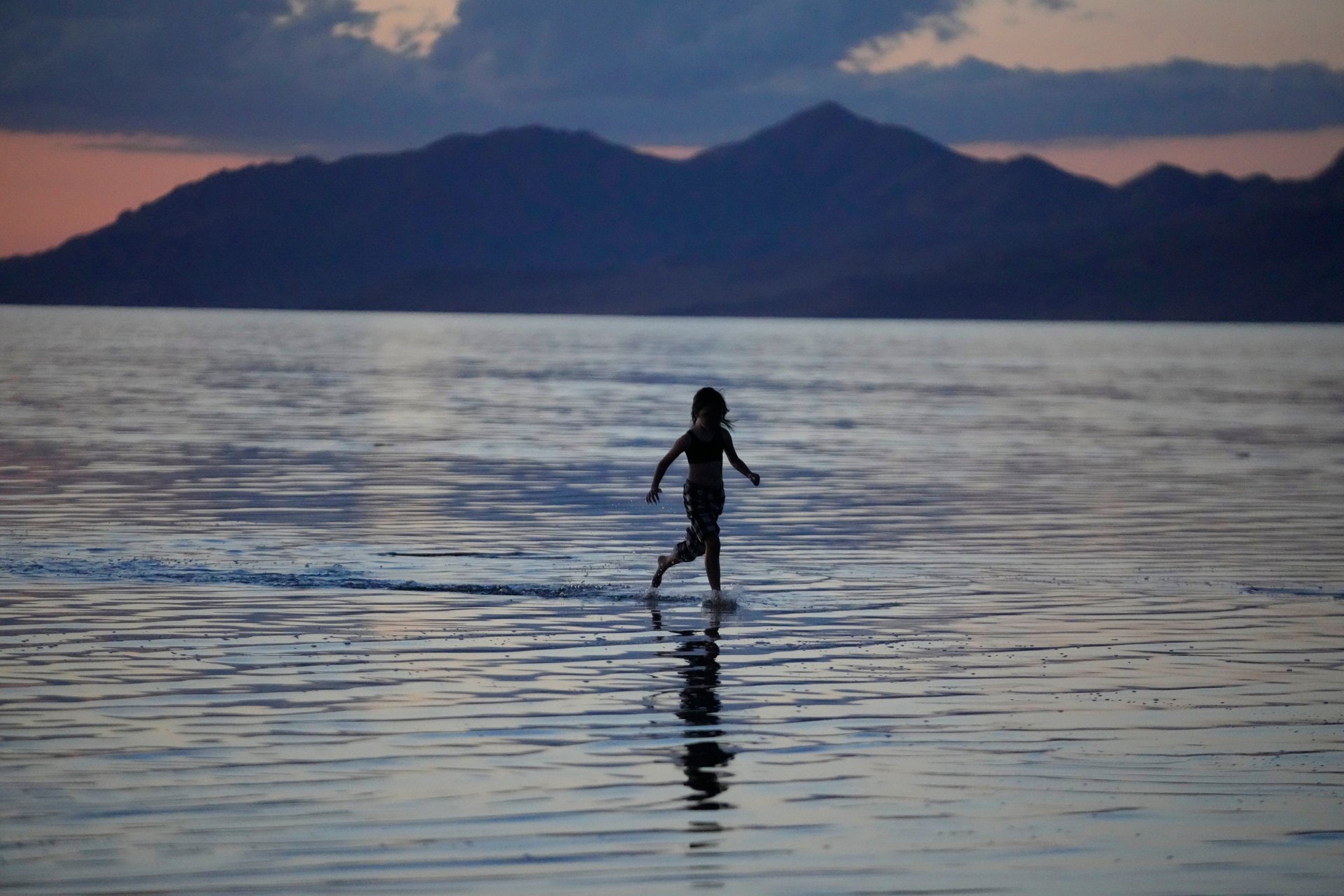The Great Salt Lake is shrinking rapidly and Utah has failed to stop it, a new lawsuit says
A coalition of environmental groups is suing Utah's government, saying the state has failed to stop the Great Salt Lake from shrinking at an alarming pace

Utah officials have pushed the Great Salt Lake to the brink of an ecological collapse because they allowed upstream water to be diverted for decades to farmers growing alfalfa, hay and other crops, according to a lawsuit filed Wednesday by a coalition of environmental groups.
Suggested Reading
The conservationists want a court to step in and force the state to let more water reach the largest natural lake west of the Mississippi River, which is an oasis for millions of migratory birds, an engine for Utah’s billion-dollar mineral industry and a tourist attraction.
Related Content
The risks of a diminished Great Salt Lake aren’t merely beached sailboats and wider shores; they also include species extinction and toxic dust clouds billowing over nearby communities, the lawsuit says.
The lake first hit a record low in the summer of 2021, fueling renewed attention from Utah's Republican-led Legislature. But lawmakers' actions have not been enough to assuage the concerns of a coalition that includes Earthjustice, the Utah Rivers Council and Utah Physicians for a Healthy Environment, among others.
“We are trying to avert disaster. We are trying to force the hand of state government to take serious action,” said Brian Moench of the Utah Physicians for a Healthy Environment.
Emma Williams, a spokesperson for Utah Republican Gov. Spencer Cox, declined to comment, citing ongoing litigation. The Associated Press sent an email seeking comment to the Utah Farm Bureau Federation.
Joel Ferry, head of the Utah Department of Natural Resources, said he couldn't comment on the case but added that the state "has been actively working with many interested parties on the lake."
State officials have repeatedly identified restoring the lake as a top priority. But despite a temporary rise in lake levels this summer after a record winter snowfall, the lake's long-term outlook is bleak. Earlier this year, Cox created and filled the position of Great Salt Lake commissioner in an effort to find solutions.
The precipitous drop in water levels, which has shrunk the Great Salt Lake’s footprint by half over the past few decades, stems from a two-fold problem: Climate change has helped decimate the mountain streams that feed the lake, while demand for the streams' fresh water has ballooned for new development, agriculture and industry.
The dilemma has pulled the Utah government in two opposite directions: meeting the water needs of businesses and citizens and keeping the lake at safe levels.
The organizations suing the state, including the Sierra Club and the Center for Biological Diversity, say the downside of rationing fresh water upstream pales in comparison to that of a disappearing Great Salt Lake.
Toxic chemicals — including arsenic, lead and mercury — are trapped in the lakebed. As more of the lakebed becomes exposed and dries, those chemicals are carried into the air by the wind. The consequent toxic dust storms could lower life expectancies, as well as heighten cancer and infant mortality rates, said Moench, citing past instances of lakes drying up across the world.
“You have millions of people directly in the path of the toxic dust," he said. “We will be forced to leave, (and) it would be because of the public health consequences of the newly created dust bowl.”
Stu Gillespie, a senior attorney at Earthjustice, which filed the lawsuit, said Utah's constitution clearly outlines the state's obligation to safeguard the Great Salt Lake on behalf of the public. It's called the public trust doctrine, and it was used by California's supreme court in the 1980s to protect Mono Lake from shrinking because of water diversion to Los Angeles. The doctrine is cited in the lawsuit.
Utah has failed to protect the lake, "even though that’s what their own reports are identifying as a solution,” Gillespie said. “It’s so important for a court to step in here.”
Still, most state supreme courts have been silent or rejected the California court's view, said Barton H. Thompson Jr., a professor of natural resources law at Stanford Law School.
“If the Utah state supreme court were to use it to protect the water levels in the Great Salt Lake, that would have a very significant national impact,” Thompson said. He added that the lawsuit is a “very plausible claim” but that its fate is “highly unpredictable.”
The lake is a watering hole for millions of birds traversing the Pacific Flyway, a migratory path from the southern tip of Chile to Alaska.
As the lake shrinks, it becomes saltier, threatening the brine flies that are a key source of food for migrating birds such as the Wilson's phalarope, a shorebird that breeds in North America and winters near the Andes mountains, said Deeda Seed of the Center for Biological Diversity.
Already, a pelican colony on the Great Salt Lake has floundered after lowering water levels turned its island into a peninsula, giving access to coyotes, Seed said.
“Bird species are facing extinction. Humans along the Wasatch Front are facing toxic dust events. It’s an emergency — and it’s not being dealt with like it’s an emergency,” she said.
____
Jesse Bedayn is a corps member for the Associated Press/Report for America Statehouse News Initiative. Report for America is a nonprofit national service program that places journalists in local newsrooms to report on undercovered issues.
